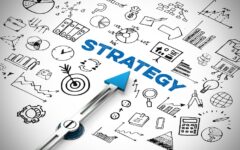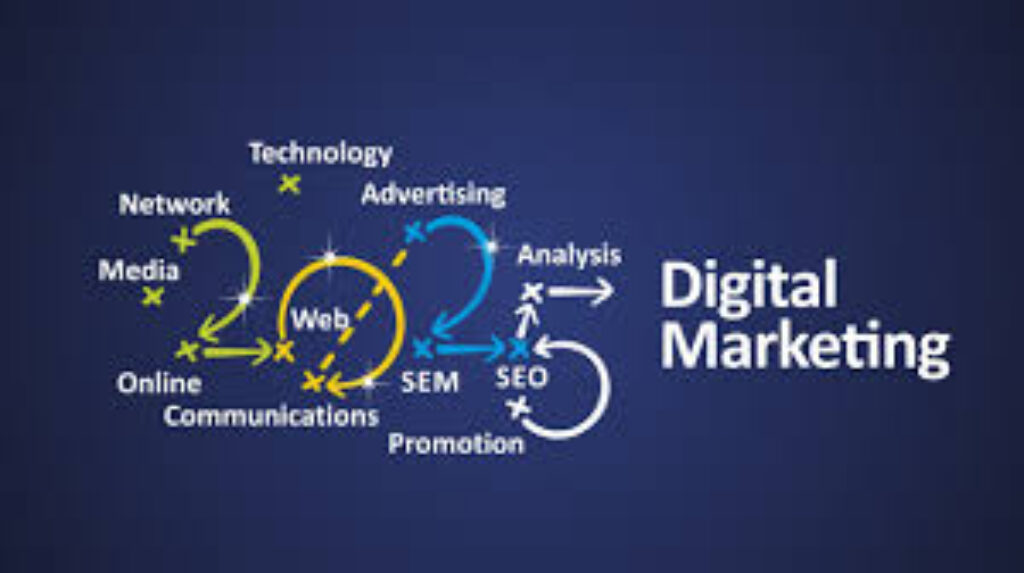
How to Develop a Winning Marketing Strategy in 2025
As technology, consumer behavior, and digital platforms evolve, so must your marketing strategy. In 2025, creating a winning marketing strategy isn’t just about being present online—it’s about being purposeful, data-driven, and adaptable. Today’s brands are expected to deliver personalized experiences, build authentic relationships, and create measurable results across multiple channels.
Whether you’re running a startup, growing a small business, or leading a marketing team, here’s how to develop a marketing strategy that will help you thrive in 2025.
1. Start with Clear, Customer-Centric Goals
A winning marketing strategy begins with defined business goals that are directly tied to your customers. Ask yourself:

- What do we want to achieve this year?
- Who are our ideal customers?
- How do they prefer to interact with brands?
Your goals should be SMART: Specific, Measurable, Achievable, Relevant, and Time-bound. Whether it’s increasing sales by 15%, generating 1,000 qualified leads per month, or expanding into a new market, aligning marketing objectives with overall business outcomes is essential.
2. Understand Your Audience on a Deeper Level
In 2025, data-driven audience insights are more powerful than ever. Consumers expect brands to know what they want, when they want it, and how they want it delivered.
How to understand your audience better:
- Use tools like Google Analytics 4, HubSpot, or Hotjar for behavioral data.
- Conduct surveys, interviews, and social listening.
- Build detailed customer personas based on lifestyle, pain points, and buying habits.
The more you know your audience, the more effectively you can personalize your message and experience.
3. Leverage AI and Automation Thoughtfully
Artificial Intelligence (AI) is no longer optional in modern marketing—it’s a competitive edge. In 2025, marketers use AI to:
- Personalize email and website content at scale.
- Predict customer behavior using machine learning models.
- Automate repetitive tasks like social media posting and ad bidding.
Pro tip: Use AI tools (like ChatGPT, Jasper, or SurferSEO) to generate content ideas or streamline workflows, but always humanize your final message. Authenticity still matters.
4. Create Content That Solves Problems and Builds Trust
Content remains the foundation of inbound marketing, but in 2025, it’s about depth and value, not just frequency.
Winning content strategy includes:
- Educational blog posts, how-tos, and expert guides.
- Short-form videos (especially on platforms like TikTok, Instagram Reels, and YouTube Shorts).
- User-generated content (UGC) to build community and authenticity.
- Thought leadership through LinkedIn posts, podcasts, or whitepapers.
Focus on quality over quantity, and prioritize content that answers real customer questions, solves problems, and builds trust over time.
5. Embrace Omnichannel Engagement
Consumers now move fluidly between platforms—your marketing needs to do the same. A strong strategy in 2025 means delivering a seamless brand experience across channels.
Omnichannel marketing tips:
- Be consistent in branding and messaging across platforms (social, email, web, ads).
- Use retargeting to guide users from one platform to another.
- Use customer journey mapping to understand how people interact across channels and optimize touchpoints.
Platforms like Klaviyo, Salesforce, and Meta’s ad ecosystem allow for deeper integration and tracking.
6. Focus on First-Party Data and Privacy Compliance
As third-party cookies phase out and data privacy regulations tighten, first-party data (information you collect directly from users) becomes your most valuable asset.
How to build and use first-party data:
- Offer lead magnets (e.g. ebooks, webinars, exclusive discounts) in exchange for email sign-ups.
- Collect preferences and feedback through polls, forms, and email interactions.
- Use CRMs and CDPs (Customer Data Platforms) to segment and personalize effectively.
Be transparent about how you collect and use data—privacy compliance builds trust and protects your brand.
7. Prioritize Community and Brand Advocacy
The most powerful marketing in 2025 is not always paid—it’s peer-to-peer influence. People trust people more than brands, so creating loyal communities and advocates is crucial.
Strategies to build community:
- Launch online groups or forums where customers can connect.
- Partner with micro-influencers for authentic promotion.
- Reward loyal customers with referral programs or exclusive perks.
A community-driven brand not only retains customers longer but also amplifies your reach organically.
8. Measure What Matters and Stay Agile
A strategy is only as good as the metrics behind it. In 2025, marketers have access to advanced analytics—but the key is knowing which metrics truly matter.
Track these KPIs:

- Customer Acquisition Cost (CAC)
- Customer Lifetime Value (CLTV)
- Conversion rates across funnels
- Engagement (CTR, open rates, bounce rates)
- ROI per channel
Win with Strategy, Adaptability & Human Connection
In 2025, developing a winning marketing strategy means combining cutting-edge technology with timeless principles: knowing your audience, solving real problems, and delivering consistent value.
Stay curious. Test and iterate. And above all, build genuine connections with the people you serve.






